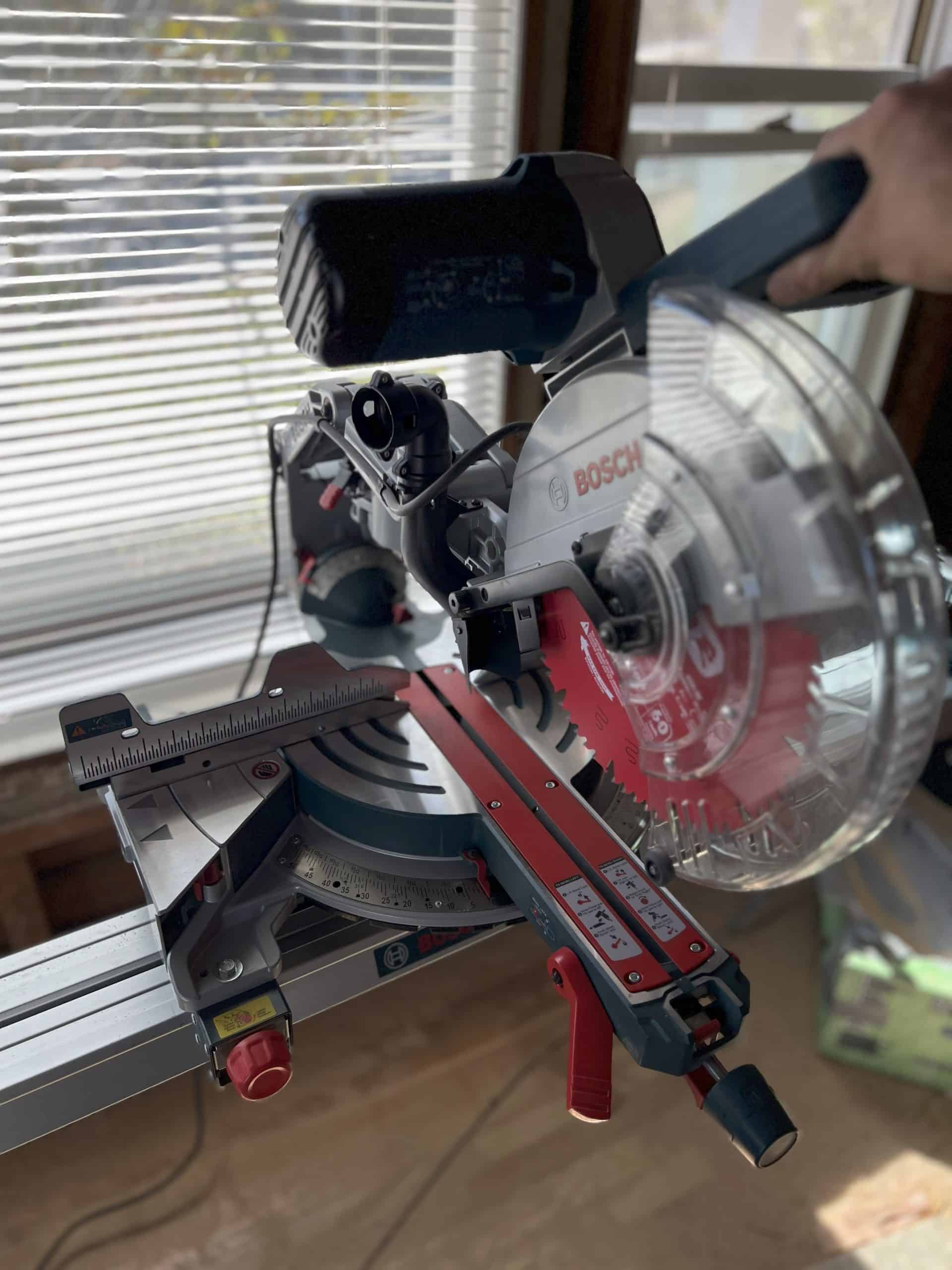7 Types of Tape Measures That Every DIYer Should Know
Disclosure: This post may contain affiliate links from online retailers, including Amazon. If you click a link and buy tools or supplies, I may earn a small commission—at no extra cost to you. This allows me to provide you free helpful content, and I genuinely appreciate your support🤝 Learn more
Ever find yourself fumbling with a flimsy, inaccurate tape measure while trying to measure something important? Yeah, we’ve all been there, and it’s beyond frustrating. A good tape measure isn’t just about length—it’s about precision, durability, and the right features for the job.
When I first started out in construction, I thought every tape measure was basically the same. Didn’t matter if I was framing a wall, laying out cabinetry, or measuring pipe — I’d just grab whatever was closest. But over the years (and a few too many wasted trips back to the truck), I realized something simple but game-changing:
There are different types of tape measures for a reason.

And if you know which type to use for each job, it makes your work faster, smoother, and way more accurate. From standard 25-foot retractable tape measures to tailor’s tapes and digital laser tools, each has a specific strength and weakness if you’re using it incorrectly.
So if you’re new to DIY, or just trying to make sense of all the measuring tools hanging in the aisle at your local hardware store, this guide is for you. Also check out how to read a tape measure.
I’ll walk you through the most common types of tape measures, what they’re best for, and how to avoid the rookie mistakes I made early on. Whether you’re working with wood, fabric, drywall, concrete, or even fencing a backyard — we’re gonna cover the tapes that’ll help you measure twice and cut once… the right way.
Let’s dive in.
What Are the Different Types of Tape Measures?
If you’ve ever walked into a hardware store and stood staring at the tape measure section wondering, “Why are there so many dang options?” — you’re not alone.
I used to think there were just tape measures and fancier tape measures. But once you start working on different projects — like laying out a 200-foot fence line one day and marking cabinet trim the next — you realize real quick that not all tape measures are created equal.
At their core, tape measures are just tools used to measure distance. But the way they’re built, the materials they use, and the jobs they’re designed for? That’s where things start to branch off. Some are perfect for construction and rough framing, others are meant for soft materials or curved surfaces. Some are built to stretch over a football field, while others fit in your pocket for quick everyday use.
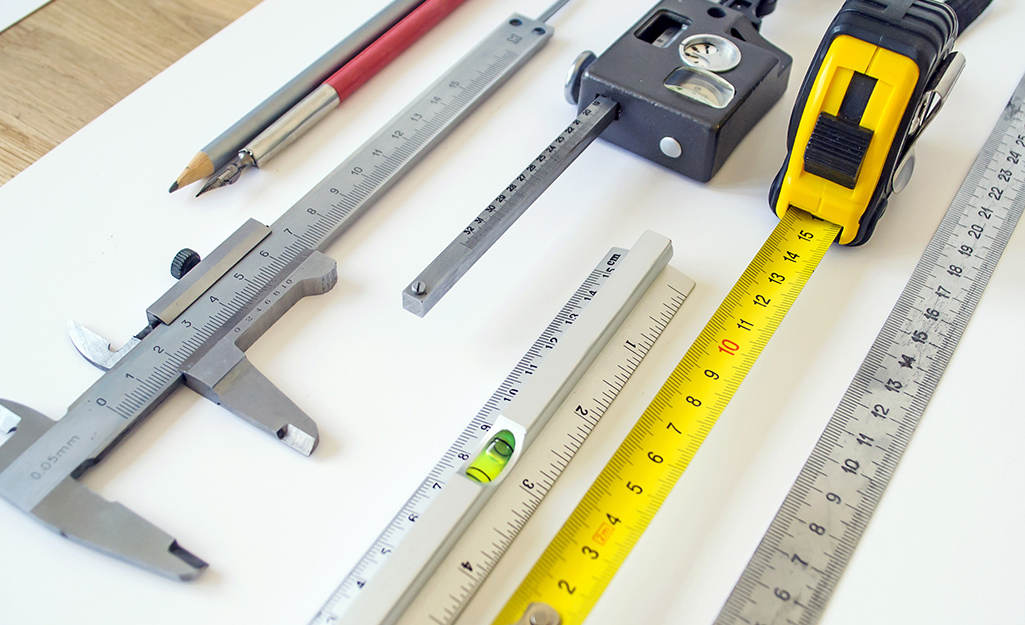
In this guide, I’m breaking down the types of tape measures you’re most likely to run into as a DIYer, homeowner, or even a budding pro. We’re talking retractable tapes, long open-reel models, laser distance tools, soft fabric ones, and even the high-tech digital combos.
By the end, you’ll know exactly what type of tape to grab for any project, whether you’re building a shed or happen to be hemming curtains.
Let’s start with the classic…
Build Smarter – For FREE!
Join the Tekton Crew and grab 3 FREE Workbench Build Plans with 3D models—plus exclusive DIY tips, tool reviews, and more!
1. Standard Retractable Tape Measures

This is the one we all know — the good ol’ retractable tape measure. If you’ve ever borrowed a tool from your dad, uncle, or neighbor, this was probably it.
I’ve probably owned 20+ of these over the years, and somehow I still misplace ‘em weekly…
Standard retractable tape measures are usually 16 to 25 feet long, though you’ll find them in everything from 6-foot pocket versions to heavy-duty 40-foot beasts. These are the go-to for most woodworking, framing, and general DIY home improvement tasks.
What makes these so popular?
They’re compact, easy to use with one hand, and designed for everyday use. The industry standard means they come with a spring-loaded blade, locking mechanism, belt clip, and a tape hook that grabs onto edges so you can measure solo.
Some key things I’ve learned over time:
- Standout matters – that’s how far the blade extends before it bends. If you’re measuring solo, a tape with 8–10 feet, or even more, of standout is a lifesaver.
- Fractional markings help a ton for beginner DIYers. Some tapes mark out 1/16ths, others even go into labeled fractions — makes reading measurements easier when you’re just getting started.
- Magnetic tips are underrated. They’ll cling to metal studs, pipes, and toolboxes when your hands are full. However, they can weigh down the end and be a pain when you don’t want it to stick to everything metal.
- The case size and blade width affects comfort and readability. A 1” wide blade is more rigid and easier to read, but can feel bulky in the pocket.
Pro tip? Buy a couple of these and stash ‘em in different spots — garage, toolbox, glove box, junk drawer. You’ll thank yourself later.
These are still my default when I’m measuring lumber, laying out a room, or doing any project where a quick, reliable tape gets the job done.
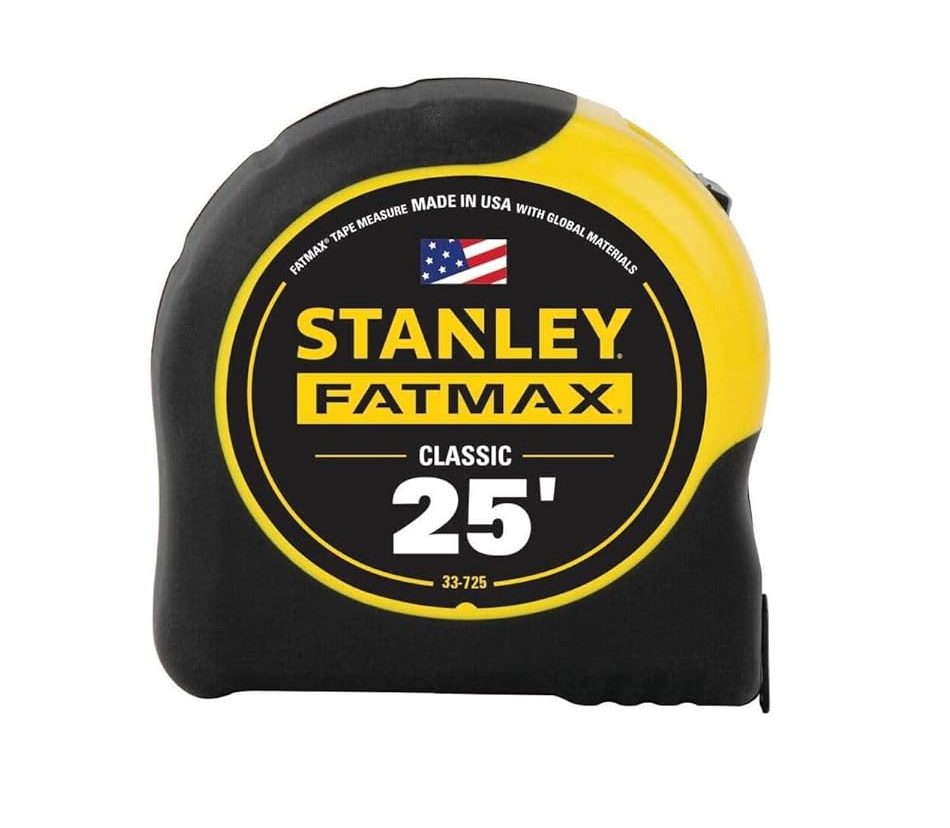
STANLEY FATMAX Tape Measure 25-Foot
- 11 ft. blade standout
- 1-1/4 in. wide blade for easy readability
- High-impact ABS case with durable rubber-holds up to heavy use
UPDATE:
The new Stanley Fatmax Premium Tape Measure just showed up, and it’s fantastic! But hard to find for now… I’ll be reviewing it soon.
2. Long Tape Measures (Open Reel)

Alright, these are for when a regular tape just won’t cut it. Ever try to measure a backyard, set fence posts, or lay out a long foundation line with a 25-footer?
Yeah, it’s doable if you have no other option, but its annoying.
I’ve done it a bunch of times and it never comes out completely accurate.
Long tape measures, often called open reel tape measures, are made for distance. We’re talking 50 feet, 100 feet, sometimes even 300 feet or more. They come coiled on an open reel (like a mini garden hose) with a hand crank, and they’re usually made from fiberglass or steel, depending on the application.
Here’s what I’ve learned using these on jobsites and larger DIY projects:
- Fiberglass tapes are lightweight, flexible, and resistant to moisture — great for outdoor use, like landscaping or concrete formwork.
- Steel tapes are more durable and accurate, but can rust if you don’t take care of them (especially if you leave them in wet grass — guilty).
- They’re built to be used by two people, but with a little trickery (and some weights or stakes), you can run them solo.
- The crank handle makes rewinding easy — just don’t crank too fast or the tape slaps back like it’s mad at you.
I’ve used these a lot when laying out framing lines, measuring long fence runs, or even doing grading and excavation prep. If you’re working on anything that goes beyond a couple dozen feet — skip the retractable and reach for one of these.
And one more thing:
Mark your measurements with spray paint or flags as you go. You’ll forget them by the time you wind that tape back in — speaking from hard-earned experience.
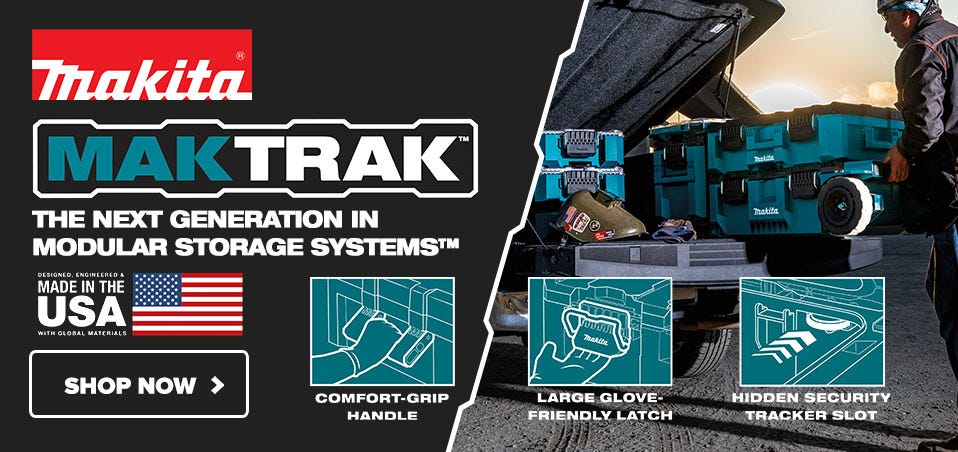
3. Measuring Wheels
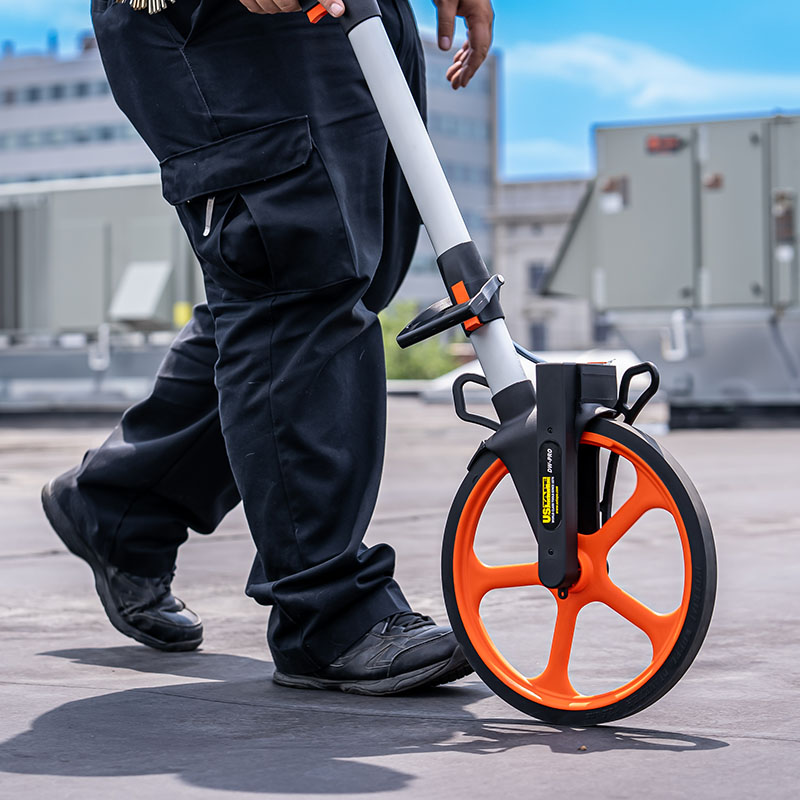
Okay, so these aren’t technically a “tape” — but they absolutely belong on this list of the types of tape measures. If you’ve ever had to measure out long stretches of ground, like a driveway, a property line, or a trench path, a measuring wheel is a total game changer.
The first time I used one was on a big landscaping project. I needed to mark out 200+ feet of fencing on uneven terrain, and I was sick of dragging a soggy reel tape through the weeds.
I know these aren’t typically used by DIYer’s or woodworking but here’s how they work:
- You roll the wheel along the ground, and it clicks off distance as it goes.
- Most are calibrated in feet and inches, and some digital ones display meters or even save measurements.
- They’re ideal for measuring long, straight distances quickly, especially outdoors where tape gets snagged or dirty.
- Basic models are mechanical, while advanced ones come with digital readouts, backlit screens, and memory functions.
Now, these do have limitations — they’re not super accurate on uneven surfaces, soft ground, or uphill slopes. And they’re not great for tight or small spaces where you need precision. But for rough layouts, they help a lot.
I’ve used measuring wheels for asphalt estimates, concrete pours, irrigation trenching, and even mapping out flooring square footage in big remodels. Once you get the hang of it, it’s actually kinda fun — like a weird builder’s version of a pedometer.
If you’re doing any large-scale outdoor work, having one of these in your tool lineup just makes sense.
4. Tailor’s Tape (Flexible Tape Measures)

This one might not live in a tool box, but if you’ve ever done upholstery, costume work, or even just tried to wrap a tape around a pipe or a curved surface — you know how useful a tailor’s tape can be.
These are those soft, flexible fabric or plastic measuring tapes you’ve probably seen in sewing kits or around a tailor’s neck in an old movie.
Here’s why these could deserve a spot in your toolbox:
- They conform to curved and irregular surfaces — perfect for measuring pipes, upholstery, human bodies, or round furniture edges.
- Super compact and lightweight. Toss one in your bag, drawer, or glove box and forget it’s even there.
- Usually come in 60-inch or 150cm lengths, but longer versions exist.
- Some have both metric and imperial units, which comes in handy when you’re working with international measurements or odd project specs.
Now, tailor’s tapes aren’t built for durability like construction tapes. They stretch over time, and if they get a kink or rip — they’re toast. But for measuring fabric, foam, curved moldings, or doing quick checks inside small spaces, nothing beats their flexibility.
One weird use? I’ve wrapped them around columns to get the circumference and diameter for layout lines. Super handy when you’re dealing with round or oddly shaped surfaces.
5. Digital Tape Measures
Alright, this is where the old-school meets the new-school. I’ll be honest — I was skeptical at first. I mean, do I really need a digital tape measure when my regular one works just fine?
These tools combine a classic retractable blade with digital readouts, and in some models, even laser distance sensors, Bluetooth connectivity, or built-in memory. It’s like the smart version of your everyday tape.
Admittedly, I don’t have a whole lot of experience with these since I am a little old school and prefer a good ole tape measure but I do see the utility that these have for layout and more.
These definitely make the list for types of tape measures and will probably be here to stay for the future of DIY and construction.
Here’s where they shine:
- You get precise measurements displayed digitally, which reduces human error (no more guessing if that’s 11-7/16″ or 11-1/2″).
- Some save past measurements, so you’re not constantly jotting things down or snapping photos.
- Others connect to apps or digital design software for layout planning — a huge time-saver for larger remodels or design-heavy projects.
- Some hybrid models have both a physical blade and laser capability, giving you the best of both worlds.
But there are a few things to keep in mind:
- Battery life — they’ll die on you if you forget to charge or replace the batteries.
- Calibration matters. A bumped sensor can throw things off slightly.
- And of course, they’re a bit more expensive than a standard $10 tape measure. Worth it for regular users, maybe not for someone just hanging picture frames.
They can be great for cabinetry, finish carpentry, and jobs where you’re taking a ton of measurements in a row. Having a digital screen can speed things up and keep you accurate. But I would still keep a backup analog tape on you, just in case.
If you’re tech-savvy and want to streamline your measuring workflow a digital tape might be your new best friend.
6. Laser Tape Measures (Laser Distance Measurers)

If you like accuracy, speed, and cool gadgets, the laser measure is your jam.
These types of tape measures blew my mind the first time I saw them in action.
I was on a remodel job, and this guy pulls out what looks like a mini TV remote, points it at the far wall, and says, “26 feet, 8 inches.” I double-checked with my tape… and he was dead on.
Here’s what makes laser distance measurers awesome:
- Instant measurements — no pulling tape across rooms, no bending around corners, no second person needed.
- They’re highly accurate, usually within 1/16 of an inch, which is more than enough for most DIY and layout work.
- Great for measuring rooms, ceilings, windows, and calculating square footage super fast.
- Many have memory, area/volume calculation, and even Bluetooth syncing for sending measurements straight to your phone or design app.
But they’re not perfect:
- You need a clear line of sight — no obstacles between the device and the target.
- Bright sunlight can mess with accuracy outside (though some models handle it better than others).
- They’re a bit pricey, so not really a must-have unless you’re doing layout, estimating, or remodeling on the regular.
I use mine a ton during pre-construction walkthroughs and when I’m estimating material needs for a job. It’s especially helpful when I’m working alone and don’t want to drag a 25-footer across the floor, hoping it doesn’t slide off the trim or bend in the middle.
If you want something that feels high-tech and saves a ton of time on layout work, add a laser tape to your toolkit. Just don’t lose it… they’re small and sneaky.
7. Keychain & Pocket Tape Measures
Now we’re talkin’.
These little guys WILL save you if you are trying to build with little kids around. When my 2 and 4 year olds are hanging out with me while I work, this is what I hand them so they can “help”.
Otherwise I would not be able to get anything done… I know there are other dads out there who can relate to this😆.
They’re not flashy, they’re not built for jobsite abuse, and they sure won’t stretch across a room — but they will make your little kids smile and can be handy for tiny measurements.
Bonus: Specialty Tape Measures You Might Encounter
Most folks will only ever need a couple types of tape measures, but once you start diving deeper into construction, fabrication, or technical trades, you’ll stumble across some weird but incredibly useful specialty types of tape measures.
These aren’t something you’ll use every day — but when you do need them, nothing else will cut it.
Here are a few you might run into:
- Story Pole Tapes
These are often used in cabinet making, window installs, and trim carpentry. Instead of standard inch markings, they’re pre-marked for specific layout measurements. Think of them like cheat codes for repeated installations — they help you mark stud heights, shelf spacing, or window reveals without doing math every time. - Pipe Diameter Tapes (Pi Tapes)
This one blew my mind the first time I saw it. These flexible tapes wrap around a pipe and are calibrated to show the diameter directly, rather than the circumference. Great for plumbers, HVAC techs, or anyone working with round stock. - Engineer’s Scale Tapes
Used mostly in surveying and civil engineering, these tapes measure in decimal feet instead of inches. So instead of 12 inches in a foot, you’re working in tenths — which helps when plotting large site layouts or reading scaled drawings. - Left-Handed Tape Measures
Yeah, they exist! The numbers read from right to left when you’re holding it in your left hand. Sounds minor, but for lefties doing precision layout, it’s a game changer. - Dual-Scale & Metric-Only Tapes
If you’re working internationally, or using imported plans, you’ll probably need a tape that shows metric (millimeters/centimeters) either alongside or instead of imperial measurements.
Most of these aren’t going to be in your first tool kit — but once you get into more specialized work, you’ll want the right tool for the job.
And honestly, there’s something kinda fun about learning how to use the types of tape measures most people have never even seen.
What’s the Best Type of Tape Measure for DIYers?
Alright, so now that we’ve covered all the bells and whistles — let’s cut to it:
What type of tape measure should you actually buy if you’re getting started with DIY?
Here’s the deal. If you’re working on household projects, furniture builds, or just measuring stuff around the house, you probably don’t need a measuring wheel or a decimal-scale engineer’s tape. You need reliability, ease of use, and enough versatility to handle whatever weekend project you’ve got lined up.
Here’s my recommendation based on years of building, fixing, and cussing at broken tools:
🧰 At a minimum, every DIYer should have:
- A 25-foot standard retractable tape – this is your everyday workhorse. Go for one with good standout, easy-to-read markings, and a durable blade. I like the Stanley Fatmax.
- A flexible tailor’s tape – perfect for curves, odd angles, or measuring soft materials like upholstery, pipe insulation, or trim wraps.
🧪 Bonus tools to level up:
- A laser distance measurer – if you’re measuring whole rooms, hanging drywall solo, or working on design/layout, this tool will save your back and your time.
- A keychain or pocket tape – I use this more than I expected. Great for quick errands or random measurements on the fly.
No tape is truly “best” across the board — it depends on what you’re building. I usually carry at least two types with me on any job, and I keep extras in the truck, shop, and kitchen drawer (seriously). And don’t cheap out — a bad tape is worse than no tape.
You don’t need a dozen different kinds, but you do need the right kind for the right job. Start with the basics, and build your tape arsenal as your projects get bigger and more advanced.
Types of Tape Measures Final Thoughts
When I was first getting into DIY, I had no clue there were so many types of tape measures. I thought one size fits all — grab a tape, measure something, done. But man, after enough crooked cuts, botched layouts, and “uh-oh” moments halfway through a project, I learned fast that the right tape measure makes all the difference.
The truth is, whether you’re hanging shelves, framing a wall, or wrapping a pipe, having the right tool for the job isn’t just about saving time — it’s about doing better work. A solid 25-foot retractable tape will cover 80% of your needs, but once you start leveling up your projects, a few specialty tapes can really make things smoother.
If you’re serious about building your DIY skills, start paying attention to what you’re measuring, where you’re measuring, and how often. That alone will tell you which types of tape measures belong in your kit.
Want more no-nonsense guides like this?
👉 Subscribe to the Tekton Travis email list for weekly tips, tools, and real-world know-how you can actually use.
👉 And check out my other posts like Best Starter Tool Kits for DIYers and Essential Power Tools for Beginners to keep growing your skills and confidence on every project.
Thanks for reading — now go measure something the right way.
Build Smarter – For FREE!
Join the Tekton Crew and grab 3 FREE Workbench Build Plans with 3D models—plus exclusive DIY tips, tool reviews, and more!
Types of Tape Measures FAQs
What are the main types of tape measures?
The main types of tape measures include standard retractable tapes, long tape measures (open reel), measuring wheels, tailor’s tapes, digital tape measures, laser distance measurers, and compact pocket or keychain tapes.
What’s the best tape measure for woodworking?
For woodworking, a 25-foot standard retractable tape with clear fractional markings, strong standout, and a reliable locking mechanism is ideal. Some woodworkers also prefer magnetic hooks or metric/imperial dual scales for added precision.
Can a laser tape measure replace a traditional one?
Laser tape measures are fast and accurate, especially for indoor layouts and long-distance measuring, but they’re not ideal for everything. For rough work, tight spaces, or jobs that require hooking and marking, a traditional tape is still essential.
Why are there different types of tape measures?
Different tape measures are designed for specific tasks. Some are built for long outdoor distances, others for curves or fabric, and some use tech like lasers or digital readouts for speed and accuracy. Choosing the right one improves efficiency and accuracy.
What’s the difference between fiberglass and steel tape measures?
Fiberglass tapes are more flexible and resistant to weather, making them great for outdoor use. Steel tapes offer higher accuracy and durability but can rust or kink if not cared for properly.
Are pocket or keychain tape measures worth it?
Yes! While not meant for big jobs, pocket and keychain tapes are great for quick checks, small projects, or keeping on hand when you’re out shopping for materials or furniture.
What’s a story pole tape measure?
A story pole tape is a specialized tool used in cabinetry and finish work. It’s marked with specific layout intervals (like shelf spacing or window heights) to ensure repeatable accuracy without constant measuring or math.
How accurate are digital and laser tape measures?
Most digital and laser tape measures are accurate within 1/16 of an inch, depending on the model and usage. They’re extremely useful for interior work, layout, and design — but always double-check critical measurements when precision is key.






